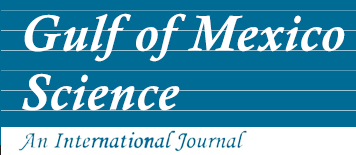Alternate Title
Diets of Young King and Spanish Mackerel Off the Southeast United States
Abstract
The diet of larval and post-larval (n = 95 and 307), and juvenile (n = 489 and 508) king (Scomberomorus cavalia) and Spanish mackerel (S. maculatus) from the Gulf of Mexico and southeastern Atlantic coastal waters of the U.S. consisted principally of fishes. Carangids, clupeids, and engraulids occurred in 23, 7 and 9% of larval and post-larval king mackerel stomachs and in 20, 40 and 7% of larval and post-larval Spanish mackerel stomachs, respectively. Sciaenids were also common in king mackerel, occurring in 21% of the stomachs. Prey fishes included the genera Cynoscion, Caranx, and Anchoa, and the species Opisthonema oglinum. Invertebrates, principally small crustaceans and nudibranch larvae, occurred infrequently in the diets of both species, but more so in Spanish mackerel than king mackerel.
The dominant prey items for juvenile mackerels from the Atlantic were engraulids, clupeids, balistids, and squids, collectively accounting for 73.3% by volume of the diet of king mackerel and 88.8% of Spanish mackerel. More invertebrates occurred in the diet of juvenile Spanish mackerel than king mackerel, but they accounted for a smaller volume, i.e., 2.1% as compared to 5.4% for the Atlantic fish. Chi-square tests indicated significant differences between the diets of juvenile mackerel from the Gulf of Mexico and the Atlantic coast.
Recommended Citation
Finucane, J. H., C. B. Grimes and S. P. Naughton.
1990.
Diets of Young King and Spanish Mackerel Off the Southeast United States.
Northeast Gulf Science
11
(2).
Retrieved from https://aquila.usm.edu/goms/vol11/iss2/7

